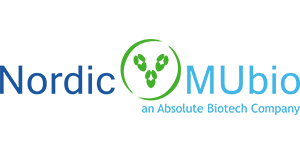Sheep anti Human secretory component (free and bound)
Sheep anti Human secretory component (free and bound), Polyclonal, Clone: Polyclonal
SKU
ShAHu/SC
Packaging Unit
1 ml
Manufacturer
Nordic-MUbio
Availability:
loading...
Price is loading...
Clone: Polyclonal
Background: Tested in immunoelectrophoresis, double radial immunodiffusion and ELISA against a panel of appropriate secretions and purified Ig isotypes. The antiserum reacts with both bound secretory component (secretory IgA) and with the free SC present in human secretions. In immunoelectrophoresis against human milk, using a high electroendosmosis agar plate, free SC is precipitated in the alph-2 region. The antiserum does not react with other molecular forms of IgA, or with any other secretory or plasma protein. In precipitating techniques as immunoelectrophoresis and single and double radial immunodiffusion to identify the presence secretory component in human serum or other body fluids and to determine its concentration.
Source: Secretory component is present in human secretions bound to secretory IgA (sIgA) and in free form. Secretory IgA (sIgA) functions as a dimer or polymer and accounts for almost all specific mucosal antibody activity. A molecule of sIgA is made up of two molecules of IgA, one J chain and one SC (MW 65,000). The dimer IgA is transported into secretions by its binding to the SC on the epithelial cells. Under normal conditions, sIgA contains both subclasses IgA1 and IgA2, since both are capable of binding SC. Secretory component also has an affinity for polymeric IgM. Purified free human secretory component isolated from pooled milk is used for immunization. Freund’s complete adjuvant is used in the first step of the immunization procedure.
Specificity: Precipitating polyclonal sheep antiserum to human secretory component.
UniProt: P01833
Caution: This product is intended FOR RESEARCH USE ONLY, and FOR TESTS IN VITRO, not for use in diagnostic or therapeutic procedures involving humans or animals. This datasheet is as accurate as reasonably achievable, but Nordic-MUbio accepts no liability for any inaccuracies or omissions in this information.
Background: Tested in immunoelectrophoresis, double radial immunodiffusion and ELISA against a panel of appropriate secretions and purified Ig isotypes. The antiserum reacts with both bound secretory component (secretory IgA) and with the free SC present in human secretions. In immunoelectrophoresis against human milk, using a high electroendosmosis agar plate, free SC is precipitated in the alph-2 region. The antiserum does not react with other molecular forms of IgA, or with any other secretory or plasma protein. In precipitating techniques as immunoelectrophoresis and single and double radial immunodiffusion to identify the presence secretory component in human serum or other body fluids and to determine its concentration.
Source: Secretory component is present in human secretions bound to secretory IgA (sIgA) and in free form. Secretory IgA (sIgA) functions as a dimer or polymer and accounts for almost all specific mucosal antibody activity. A molecule of sIgA is made up of two molecules of IgA, one J chain and one SC (MW 65,000). The dimer IgA is transported into secretions by its binding to the SC on the epithelial cells. Under normal conditions, sIgA contains both subclasses IgA1 and IgA2, since both are capable of binding SC. Secretory component also has an affinity for polymeric IgM. Purified free human secretory component isolated from pooled milk is used for immunization. Freund’s complete adjuvant is used in the first step of the immunization procedure.
Specificity: Precipitating polyclonal sheep antiserum to human secretory component.
UniProt: P01833
Caution: This product is intended FOR RESEARCH USE ONLY, and FOR TESTS IN VITRO, not for use in diagnostic or therapeutic procedures involving humans or animals. This datasheet is as accurate as reasonably achievable, but Nordic-MUbio accepts no liability for any inaccuracies or omissions in this information.
| SKU | ShAHu/SC |
|---|---|
| Manufacturer | Nordic-MUbio |
| Manufacturer SKU | ShAHu/SC |
| Package Unit | 1 ml |
| Quantity Unit | STK |
| Reactivity | Human |
| Clonality | Polyclonal |
| Application | Immunoprecipitation, Electrophoresis |
| Host | Sheep |
| Conjugate | Unconjugated |
| Product information (PDF) | Download |
| MSDS (PDF) |
|

 Deutsch
Deutsch







